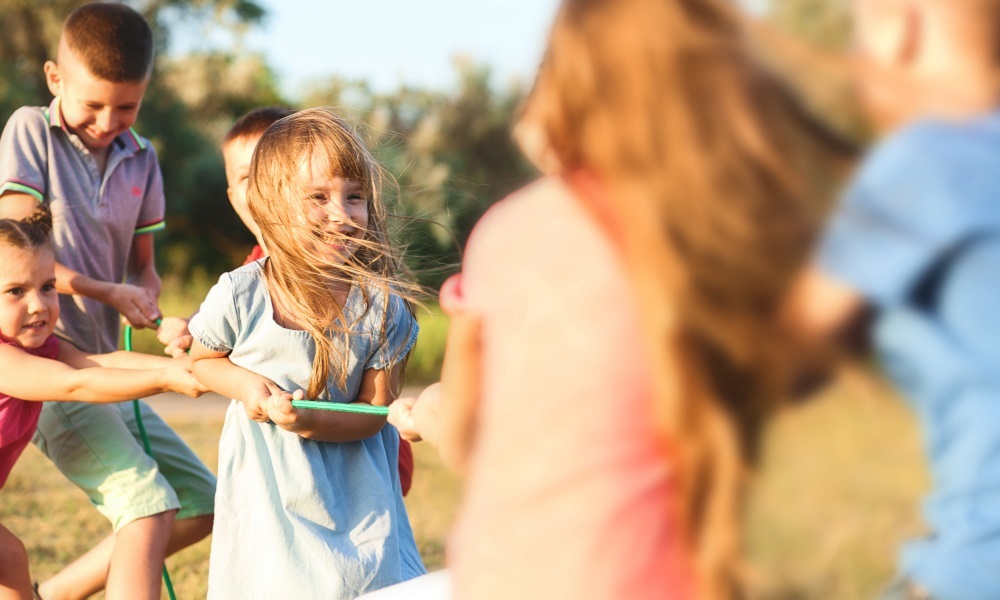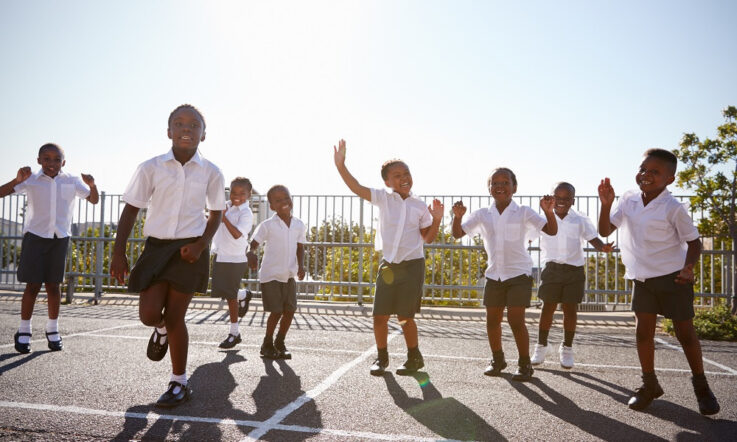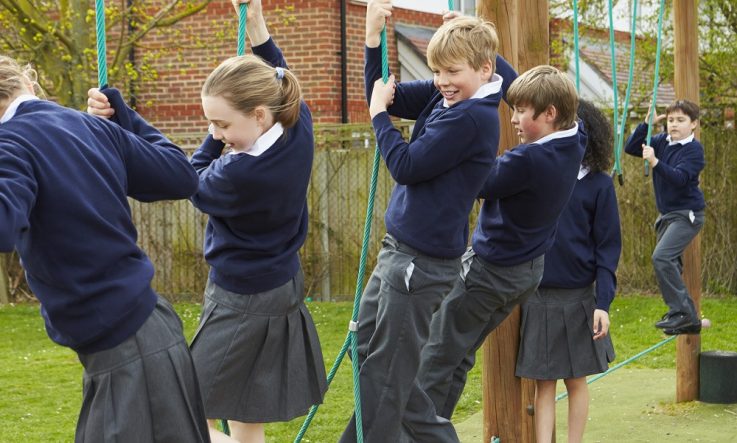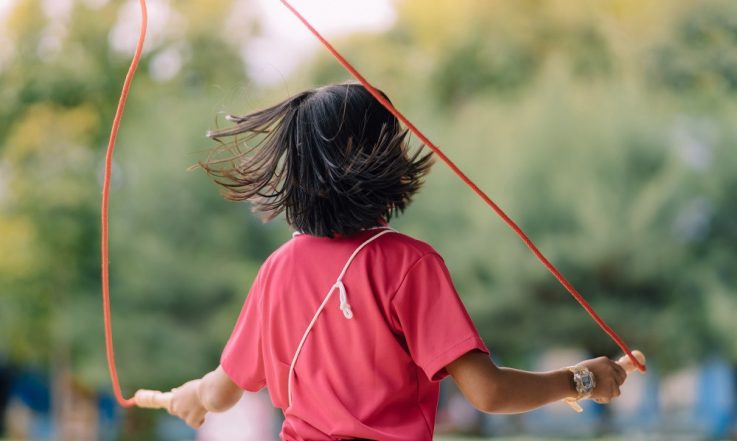A new study by researchers at the University of Canberra has seen three- and four-year olds increase their daily total physical activity by 28 minutes, and moderate-to-vigorous physical activity by 16 minutes.
According to the findings published in the International Journal of Behavioral Nutrition and Physical Activity, a peer coach-facilitated program helped early childhood educators integrate physical activity into their daily routine and existing curriculum.
In today’s Q&A, lead author and Senior Research Fellow Dr Rohan Telford from the University of Canberra Research Institute for Sport and Exercise (UCRISE), and Professor Dick Telford from UCRISE discuss the Active Early Learning (AEL) trial that children participated in, how they went about conducting the study, some of the key findings, and the importance of physical literacy in developing primary school readiness.
Why did you decide to conduct this study in the first place? What were your key aims?
The importance of physical activity to both our physical and psychological wellbeing is well established. But in the 21st Century, physical activity is often removed from everyday living, so we need to find ways to reintroduce it. This applies to young children, who are not immune from physical activity insufficiency.
There is compelling evidence telling us that early childhood is a critical time in our lives, with the opportunity to develop early habits around regular physical activity, which are likely to positively affect lifetime physical activity practices. And so, the aim of our research was to design and evaluate a program that fosters the development of these early habits and increase children’s physical activity in early learning centres.
How did you go about conducting this study? Who was involved and how were they selected to take part?
One way to positively influence physical activity habits is through the early development of physical literacy. A physically literate child has the fundamental movement skills, motivation, and confidence to seek and enjoy a physically active lifestyle.
Following a request from the owners of Edge Early Learning, Harmony Early Learning Journey and Petit Early Learning in south east Queensland and northern New South Wales, our University of Canberra team developed a physical literacy program for early learning centre educators and conducted a randomised controlled trial to determine how effective it was.
We recruited 16 of the above-mentioned centres to conduct a randomised controlled trial. Eight centres received the program for six months, and the remaining eight centres continued with their usual practice as the control group. To determine the effect of the program, we compared the two groups’ changes in children’s physical activity and physical literacy, staff appraisal and interaction with the children, and the general centre environment.
Who was the peer coach and what was their role?
The peer coach in our study, previously unknown to the research team, was recruited from the area in which the study took place. The successful applicant had prior experience in delivering children’s physical activity programs in childcare and not-for-profit settings. Her role as coach was to listen, teach, support, and provide resources and activities to educators; doing so with flexibility and sensitivity, so that educators receive educative, rewarding and enjoyable professional development while delivering the AEL program.
Could you explain how the peer coach went about helping educators integrate physical activity into their daily routine and existing curriculum?
The AEL program is made up of a series of activities and experiences that develop physical literacy. The peer coach visited each centre in the study once per week for up to three hours to guide educators to introduce the program across four components; group/mat time and transitions, movement education, cross-curricular movement education, and encouraging challenging free play.
The coach received prior training from the research staff in strategies to assist educators to embed these daily activities into their routine and to guide educators to reflect on and improve the way they support children to develop physical literacy.
In what ways did this study help educators to develop children’s physical literacy? And, why is the development of physical literacy in childhood so important?
The program motivated and supported educators to incorporate specially designed new activities and experiences into their daily routine that targeted physical literacy. We can sum up why targeting physical literacy is important in young children in terms of the well-established principles of child development showing that physical, social, emotional and cognitive development are interactive; that best development of each of these characteristics occurs alongside development of the others.
Let’s run through some of the key findings. Firstly, what were they? But also, how do they contribute to the existing literature published on this topic?
Our first publication from the randomised control trial showed that the implementation of the AEL program increased children’s daily total physical activity by around 28 minutes while attending their early learning centre. This finding has practical significance when considered alongside physical activity guidelines for preschool aged children. The current World Health Organization physical activity recommendation for preschool children is a minimum of 180 minutes per day, of which at least 60 minutes should be energetic play.
The AEL program made a substantial contribution towards achieving the WHO recommendations. Importantly, preliminary yet to be published evidence also shows that the benefits were not confined to physical activity. Improvements in expressive vocabulary and impulse control indicated that the AEL physical literacy focused approach has wider benefits, extending to the social and psychological aspects of learning, so important in developing primary school readiness.
For educators working in early childhood settings, or in school settings, what are some of the practical strategies they could take from reading this study?
There are several key takeaways for both centre educators and centre managers/owners. For educators, our study highlights how important their job is and shows that by making small daily changes and introducing AEL activities into their daily routine, they can have a big impact on children’s physical literacy and level of physical activity. Our current study in early learning centres, as well as our previous research in schools, also demonstrates that working with a coach or mentor is an effective strategy for teachers to achieve improvements in their competency and capability to develop children’s physical literacy.
The takeaways for centre managers and owners is that investing in educators’ support improves their teaching practice and routine in this area, which in turn increases children’s physical activity – and this may well influence their physical activity behavior, and so their health for life.
The AEL program was designed and evaluated by the University of Canberra and is currently being delivered by the Australian College of Physical literacy, (ACPL) to Early Learning centres throughout Australia.
References:
Telford, R. M., Olive, L. S., & Telford, R. D. (2021). A peer coach intervention in childcare centres enhances early childhood physical activity: The Active Early Learning (AEL) cluster randomised controlled trial. International Journal of Behavioral Nutrition and Physical Activity, 18(1), 1-11.
Think about how you could make your lessons more physically active. Which sedentary activities or lessons do you teach that that could be made more physically active?
The study’s authors suggest that by making small daily changes to a child’s their daily routine, you can have a big impact on their physical literacy. What small changes could you make in your classroom? How will you measure the impact they’re having?



